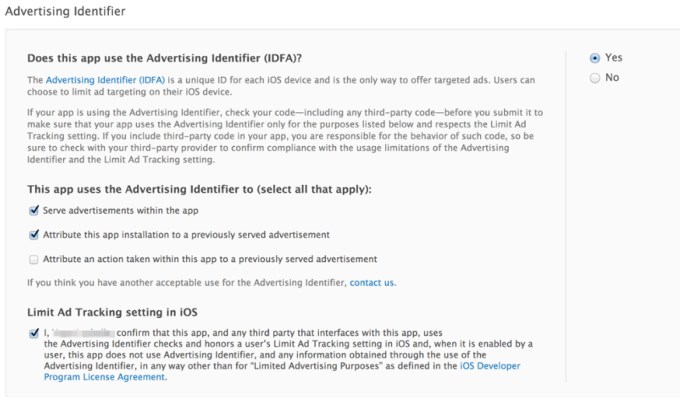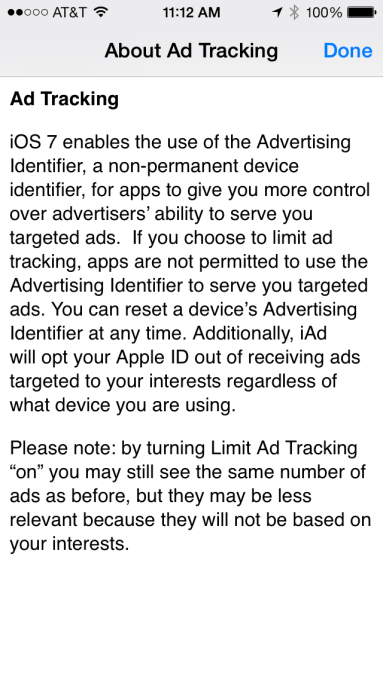Apple has just updated a section in iTunes Connect, the service mobile developers use to distribute and update their applications on the iTunes App Store, with new language that details how the Advertising Identifier (IDFA) can and cannot be used, and asks for developers’ compliance with these rules by checking a box.
Though Apple began rejecting some applications in February which were using the unique identifier but not showing ads, this change now formalizes the process – meaning that Apple could now reject any non-compliant apps going forward.
For background, Apple had been signaling to developers throughout 2013 that it was time to make the switch over to the IDFA as the preferred ad tracking option within iOS applications.
The change has been a long time coming, following the initial phase out of the unique identifier known as the UDID, first announced back in 2011. For a number of reasons, including privacy concerns and a changing regulatory environment, the UDID was no longer the way Apple wanted developers to uniquely identify end users of Apple devices and apps, or track their activities.
While the intention with the UDID and other tracking methods were to offer functions that were similar in some ways to the way cookies work on the web, the problem was that, unlike cookies, users didn’t have any way to take back control over their data through opt-out features, or by resetting their identifier – a task which would serve essentially the same purpose as deleting cookies off your computer.
Though a number of other tracking methods created by third-parties emerged following the UDID’s phase-out, Apple’s IDFA (Advertising Identifier) is now the only official method, as the new text in iTunes Connect makes clear.

Specifically, the section advises app developers that the IDFA is “the only way to offer targeted ads” and offers three use cases which they must also check, if in place:
-
Serve advertisements within the app
-
Attribute this app installation to a previously served advertisement
-
Attribute an action taken within this app to a previously served advertisement
In addition, developers have to check a box confirming that their application as well as any third party that interfaces with the application uses the Advertising Identifier and honors the end user’s “Limit Ad Tracking” setting in iOS.
That setting enables users to control whether or not advertisers can serve them ads targeted to their interests, and can be reset at any time by going to “Settings–>Privacy–>Advertising–>Reset Advertising Identifier” in iOS’s Settings app. Broadly speaking, this is the iOS equivalent to wiping your cookies.

The changes are ultimately about respecting user privacy choices on mobile, but were also prompted in part by increased governmental scrutiny into how iOS developers were collecting, storing and using consumer data. But even with the IDFA in place since iOS 6, the rules around its usage had been hazy. Though it was designed for use by app publishers, not advertisers, many advertisers have been accessing and passing the IDFA to ad networks for tracking purposes, while others including the developers themselves may have been warehousing ad tracking data for a number of purposes, including retargeting campaigns and building user profiles.
What Apple is saying with the changed language is that even third parties accessing the app would need to request the IDFA for things like serving ads or counting installs.
However, what’s less clear is whether or not developers can use another identifier as well (or in place of) the IDFA like the recently launched Open IDFA, for example. This identifier addresses several advertising-related use cases the IDFA solution alone overlooks, while also balancing the needs of user privacy. (Built-in expiration prevents the long-term tracking that had been prevalent in the industry, and had violated user privacy.)
There’s also the question about Apple’s ability to enforce these new rules at scale. At best, the language serves as a warning to developers that if you decide to skirt these rules knowingly, at some point, if not immediately, Apple has the right to reject or pull your application from the App Store.
